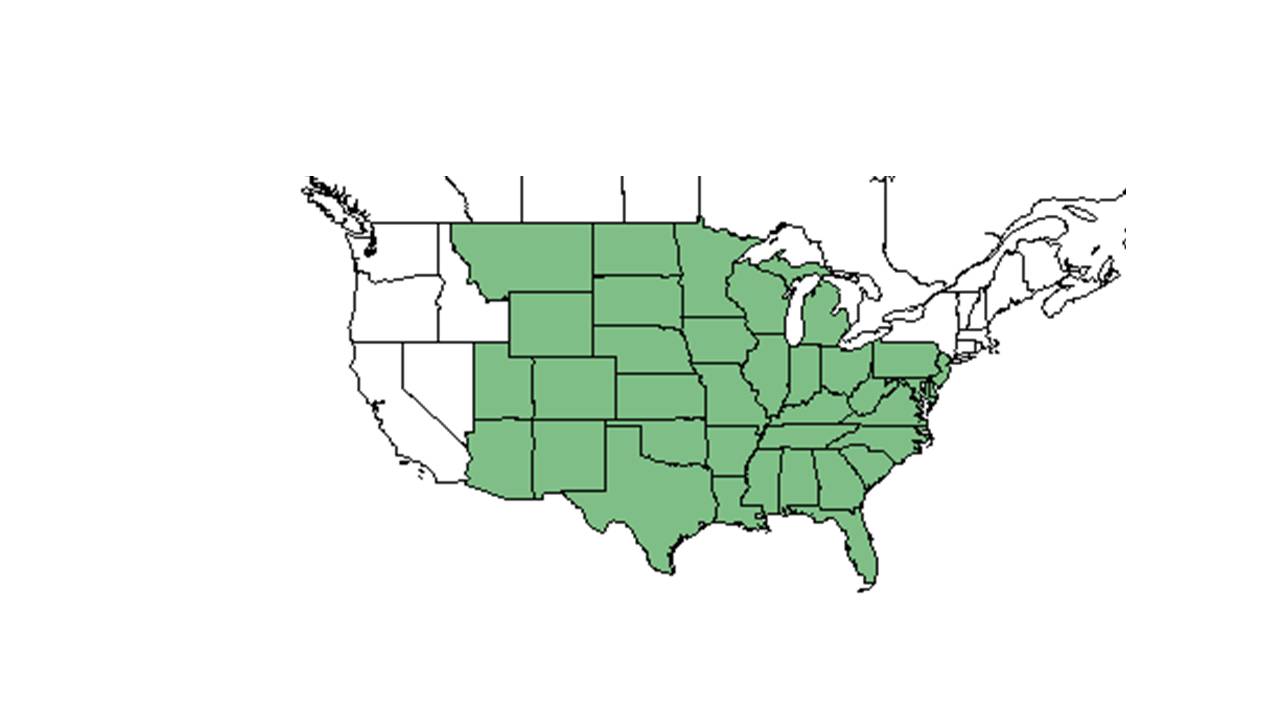Difference between revisions of "Brickellia eupatorioides"
Ruthstetler (talk | contribs) (→Description) |
Ruthstetler (talk | contribs) |
||
| Line 35: | Line 35: | ||
It germinates well at 18-22 degrees Celsius.<ref name="Kula et al 2005">Kula, A. A. R., D. C. Hartnett, et al. (2005). "Effects of mycorrhizal symbiosis on tallgrass prairie plant-herbivore interactions." Ecology Letters 8: 61-69.</ref> | It germinates well at 18-22 degrees Celsius.<ref name="Kula et al 2005">Kula, A. A. R., D. C. Hartnett, et al. (2005). "Effects of mycorrhizal symbiosis on tallgrass prairie plant-herbivore interactions." Ecology Letters 8: 61-69.</ref> | ||
===Fire ecology=== <!--Fire tolerance, fire dependence, adaptive fire responses--> | ===Fire ecology=== <!--Fire tolerance, fire dependence, adaptive fire responses--> | ||
| − | It is fire | + | It is fire tolerant.<ref name="Bahm et al 2011">Bahm, M. A., T. G. Barnes, et al. (2011). "Herbicide and fire effects on smooth brome (Bromus inermis) and Kentucky bluegrass (Poa pratensis) in invaded prairie remnants." Invasive Plant Science and Management 4: 189-197.</ref> |
| + | |||
===Pollination=== | ===Pollination=== | ||
===Use by animals=== <!--Herbivory, granivory, insect hosting, etc.--> | ===Use by animals=== <!--Herbivory, granivory, insect hosting, etc.--> | ||
Revision as of 10:10, 9 July 2015
| Brickellia eupatorioides | |
|---|---|

| |
| Scientific classification | |
| Kingdom: | Plantae |
| Division: | Magnoliophyta - Flowering plants |
| Class: | Magnoliopsida - Dicotyledons |
| Order: | Asterales |
| Family: | Asteraceae ⁄ Compositae |
| Genus: | Brickellia |
| Species: | B. eupatorioides |
| Binomial name | |
| Brickellia eupatorioides (L.) Shinners | |

| |
| Natural range of Brickellia eupatorioides from USDA NRCS Plants Database. | |
Contents
Description
Common Name: false boneset
Variety corymbulosa has been documented to be variable in habit, from erect and subvirgatte to decumbent, spreading or distinctly prostrate, arising from a slender deep-seated rootstock (FSU Herbarium).
This species is perennial.
Distribution
Ecology
Mycorrhizal relationships seemed to yield significantly higher phosphorous levels.[1]
Habitat
It is common in grassland communities.[2] It is especially dominant in the tallgrass prairie.[3] It is also found in loblolly pine communities.[4]
Phenology
Seed dispersal
Seed bank and germination
It germinates well at 18-22 degrees Celsius.[1]
Fire ecology
It is fire tolerant.[2]
Pollination
Use by animals
Diseases and parasites
Conservation and Management
Cultivation and restoration
Photo Gallery
References and notes
Florida State University Robert K. Godfrey Herbarium database. URL: http://herbarium.bio.fsu.edu. Last accessed: June 2014.
Collectors: L. C. Anderson, W. Baker, E. A. Bartholomew, S. F. Blake, J. R. Bozeman, J. R. Burkhalter, C. Cooksey, D. S. Correll, V. L. Cory, D. Demaree, J. Ewan, N Ewan, W. B. Fox, A. Gholson Jr., R. K. Godfrey, F. R. Hedges, N. C. Henderson, R. Komarek, J. Lazor, R. Lazor, R. Kral, S. McDaniel, J. B. Morrill, G. W. Parmelee, R. E. Perdue Jr., A. E. Radford, G. S. Ramseur, P. L. Redfearn Jr., J. A. Steyermark, B. C. Tharpe, and C. S. Wallis.
States and Counties: Alabama: Jefferson and Talladega. Arkansas: Cleburne, Faulkner, and Logan. Colorado: Boulder and Lincoln. Florida: Calhoun, Decatur, Escambia, Gadsden, Jackson, Leon, Liberty, Madison, Suwannee, and Wakulla. Georgia: Decatur, Early, Grady, and Thomas. Iowa: Mills and Pottawatomie. Kansas: Hamilton and Johnson. Kentucky: Madison. Maryland: St. Marys. Michigan: Barry and Kent. Mississippi: Okibbeha. Missouri: Cass, Crawford, Greene, Jackson, Johnson, and Platte. New Mexico: Colfax. North Carolina: Alexander, Buncombe, and Richmond. Tennessee: Davidson. Texas: Crockett, Dallas, Gray, Kern, Milam, Ochiltree, Pecos, Tarrant, Williamson, and Wood. Virginia: Giles. West Virginia: Wirt.
- ↑ 1.0 1.1 Kula, A. A. R., D. C. Hartnett, et al. (2005). "Effects of mycorrhizal symbiosis on tallgrass prairie plant-herbivore interactions." Ecology Letters 8: 61-69.
- ↑ 2.0 2.1 Bahm, M. A., T. G. Barnes, et al. (2011). "Herbicide and fire effects on smooth brome (Bromus inermis) and Kentucky bluegrass (Poa pratensis) in invaded prairie remnants." Invasive Plant Science and Management 4: 189-197.
- ↑ Towne 2002 cited by Kula et al 2005.More citation needed.
- ↑ Miller, J. H. and K. V. Miller (1999). Forest plants of the southeast, and their wildlife uses Champaign, IL, Southern Weed Science Society.